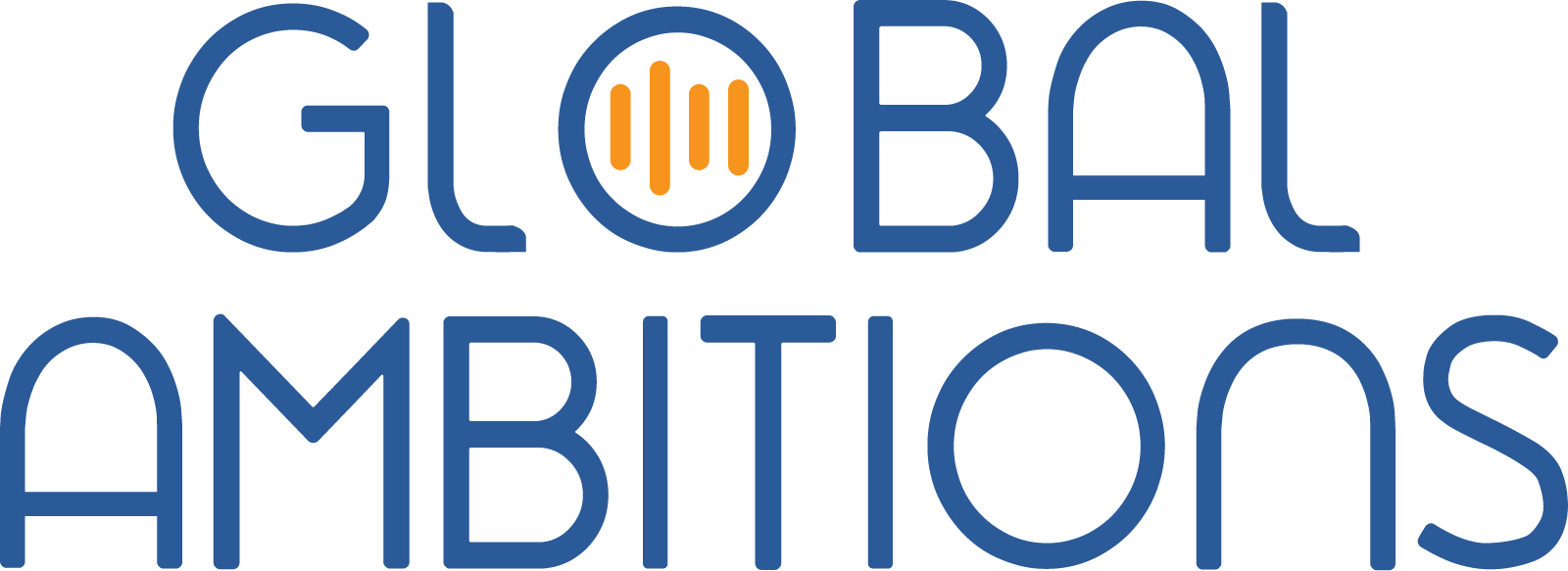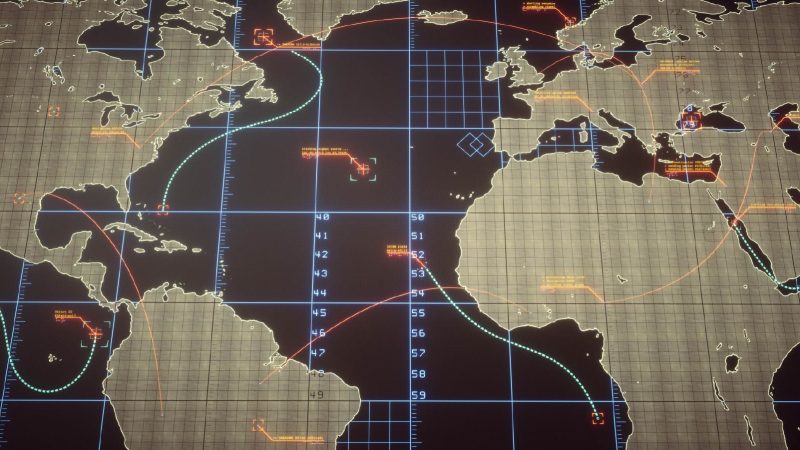With Bruno Herrmann, Executive Advisor on Globalization and Localization
Below is a full transcript of this episode
Stephanie Harris
Hi. My name is Stephanie Harris and I’ll be your host today for this episode of Global Ambitions. Our guest today is Bruno Herrmann, and he’s a globalization and localization consultant. And our topic today is how to ensure, capture, and measure global content effectiveness. Bruno, welcome to the program.
Bruno Herrmann
Thank you so much, Stephanie. Thanks for having me.
Stephanie Harris
So can you share with us a little bit about you and your experience in localization?
Bruno Herrmann
Sure. I’ve been in globalization and the globalization industry for 27 years now. So I started as a linguist and as a product manager in the 1990s. And then I moved to the client side of the industry in 2001. I joined some very large organizations like Compaq, HP, Nielsen, and recently IQVIA. So during all these years, I was definitely leading globalization programs from different perspectives. Sometimes I was more on the product management side, sometimes I was more on the marketing management side. So that gives me a pretty good overview of the whole industry, not just from one angle.
Stephanie Harris
Well, let’s go ahead and then just jump straight into this topic. What is the biggest challenge that you’ve seen with clients, with the different folks you’ve talked with as far as measuring and capturing global content effectiveness?
Bruno Herrmann
That’s a great question. And I think that, you know, my answer might be surprising, but I think the biggest issue that I’ve seen or the biggest challenge that I’ve seen is related to how people struggle to define what global content effectiveness is. Not just for themselves, but also for their clients. And it’s difficult actually to capture and measure something that cannot be defined easily. And that’s very important, actually, because global content effectiveness is about making sure that the content that is being localized and delivered to audiences, all customers, is going to create value.
It depends on the type of organization. It depends on the type of content. So global content effectiveness can be captured and measured from different perspectives. There is no right or wrong. It all depends on the business objectives first, and also it depends on what the customer experiences are required to be delivered in terms of global content.
So I think that really I’ve seen people creating some issues for themselves or for their teams trying to really understand and also define, not just describe but really define what KPIs are going to be for global content effectiveness and to measure it properly. So that is probably the starting point, though, rather than just rushing immediately to the measurement.
Stephanie Harris
Right. So what have you seen that are some really useful KPIs? So you talked about how people often choose the wrong ones. What are some of the right ones?
Bruno Herrmann
That’s right. Just to make sure that people understand what I mean by wrong ones. I think that I’ve seen in a number of cases organizations using KPIs that were performance KPIs. So production and productivity KPI. So millions of words, you know, speed, lifecycle management, etc.. All that is very important. Don’t get me wrong. It’s very important to know how fast and how well localization teams are producing and delivering content. But when it comes to global effectiveness, global content effectiveness KPIs will be different and they will be closely tied to customer experiences.
And of course, as you know, there is not one customer experience. There are many customer experiences. So when it comes to, for instance, fluency, memorability, terminology, all these KPIs are related to how customers actually experience the content that is delivered to them in their language, in their market. And this is really where global content effectiveness should be really leading people to.
Some people might say, Where should I start? I would say that the starting point and also the baseline from my perspective of global content effectiveness is to look at three groups of KPIs. KPIs related to linguistic effectiveness. Of course, you know, spelling, grammar, everything that makes some content right in various languages. That’s something that probably is most obvious to many people.
Then the second group of KPIs will be related to cultural effectiveness, cultural and legal. Of course, they go hand in hand. And in that case, I would say that it is very important to measure, you know, depending on local standards, depending on local experiences. If the content is really perceived and received as valuable. So obviously about the use of colors, it’s about the use of images, it’s about sometimes the tone of voice as well, which might be different.
And then the last group or the last category of KPIs, which is for me equally important, is the functional effectiveness. Because now we are living in a digital world. Much content which is consumed today is consumed on or in applications and platforms. So it’s very important to make sure that content that must be effective is also usable in different ecosystems and environments.
Probably the best example I could give is when an application is localized. Some companies are spending millions in translating and localizing the content properly, but then sometimes they launch the application with some great content in it. But actually, the content doesn’t work properly. So as a result of that, local customers cannot really appreciate and they cannot find the content that has been localized isn’t valuable because they cannot use it because the application doesn’t work, for instance, doesn’t work in their operating system. So this is where I would say to people, please make sure that you start with these three groups of KPIs.
Stephanie Harris
Right. So I guess maybe the next question would be, now that you have these KPIs, how do you actually measure those? What are some of the things, like the tangible advice you can give or you can measure this type of KPI this way?
Bruno Herrmann
So it will depend on the type of content of course I mentioned before the customer experiences, but the way content effectiveness will be measured is also depending on the format and the type of content that we are talking about. If we talk about let’s take two examples.
Let’s talk about marketing content first. So if we talk about banners, we talk about product sheets, everything that is related to marketing effectiveness. Then the KPIs will be closely related to how the content is delivered. The ease of use for this content, how the content appears on search engines in different languages, how actually banners are rated on different platforms. So I would say fairly typical KPIs that marketers are looking for.
I think for the localization team it’s very important for them to work hand in hand with localization leaders to also make sure that if something is wrong, like for instance, the search engine positioning is not right in some languages, that together there is an investigation about why, what happened, what was wrong or what was not done in the right way. So this is for marketing content and there is quite a lot of marketing, right?
If we talk about e-learning in training, that’s a very different type of content. So e-learning and training is a big investment for many companies. So it’s really essential that the global content effectiveness for these modules of training and learning is measured also against the objectives of avoiding in-person training sessions, which might be quite expensive, or having to repeat training sessions.
So in that case, it would be measured against, for instance, how well the content from e-learning in, for instance, Chinese or in German, how well people remember the content, right? Because if the content is well done and effective, they would remember it. If it’s not effective, then we’ll have to run the e-learning module several times. So, you know, it’s never a good sign that people have to actually use the same module multiple times because it means that there is something that they don’t remember or they don’t understand properly. And so you have to keep your eyes around memorability and learnability.
That’s a term that I like a lot, because for learning modules or e-learning modules, the criteria of learnability is very important. And how it is also perceived as different. So how is a new learning module really making a difference? Because you have so many people today, they have to use so many different modules that they have to expect so many times that they got the best e-learning modules possible so that they save a lot of time. And that the company producing the e-learning modules is also going to save a lot of time because it would mean that there will be less calls, the call centers, and there will be less questions put on the forums. So as I said, it’s a big investment, but the return on investment has to be there for organizations producing e-learning.
So you see two different types of content, different sets of KPIs and just because of the nature of the content. I would say behind each category you always have the customer experience and what people are really expecting when they receive marketing content or when they’re attending online training. I think that all of us, we are multiple people. We sometimes are customers, sometimes we are not even customers. We are looking for something. So we are not customers yet. So we have multiple facets.
We have to be like those Russian dolls, you know, you open one and then you have another one and so on. So I think that it’s very important always to understand when it’s marketing content, e-learning, or the types of content. Which experience is going to be created with that content at that time specifically?
Stephanie Harris
Mm hmm. Okay. Yeah, that makes a lot of sense. It sounds like depending on the content type, depending on, you know, the type of company, it’s going to be very variable. But do you see any trends or tools that seem to be useful and upcoming across the board?
Bruno Herrmann
Absolutely. That’s a very good question. And I would say that probably the major trend which is going on right now in the industry, but also beyond our localization industry, is global content operations. So for many years, localization has been. Considered and managed sometimes in silos, sometimes in a fairly isolated way. And I see more and more organizations today really embracing localization as one part, but one important part of their global content operations.
What I mean is that localization is definitely a very important part of each content lifecycle, but it’s also a very important part of the content value chain. And the content value chain starts at the creation of content and it ends at the delivery of content and during, you know, the whole chain, during the whole value chain. You have a number of steps in creation. Of course, there is design, development, testing, etc. . Localization, the same thing. In localization, you have multiple steps. So it’s very important that effectiveness is measured throughout this value chain.
And I see now many organizations willing, and not just the large size organizations, but also the startups, want to include localization in this value chain so that it becomes truly valuable and they can include this also from a technology perspective. Because you mentioned tools also, from a technology perspective in a localization ecosystem or what some companies called a content factory. And I like the word actually content factory because a factory is where, you know, you have some pieces at the beginning of the chain and then you see a car going out at the end of the chain. And whether it’s a content factory or the localization ecosystem, then there are tools that will actually facilitate the measurement of global content effectiveness because of course, sometimes and some tools are not enough to measure that.
So there are some tools, I would say, some major translation management systems that are including those modules and that those modules would be included in the content factory or in the in the localization ecosystem. So I would say this is the trend that people in charge of localization management and effectiveness and global content effectiveness should be looking at. Because the fact that global operations is becoming important is not really new, but it’s becoming really sensitive.
And I would say it’s now many roadmaps and blueprints when it comes to content strategies. A number of people don’t look anymore at bits and pieces altogether. They look at the big picture and they make sure that, you know, localization, just like design, just like delivery are all part of this value chain.
Stephanie Harris
Okay. Time has just flown by, but if someone is interested in this subject and wants to dig a little bit deeper, I know that Bruno always puts out very, very interesting stuff. So I’m sure he’s happy to connect with you on LinkedIn if you want to reach out to him and just follow him there as well. Thank you so much for coming on and recording this episode with us, Bruno. It has been very fascinating and enlightening.
Bruno Herrmann
Thank you so much, Stephanie. Thank you very much.

Bruno Herrmann
Executive Advisor on Globalization and Localization




